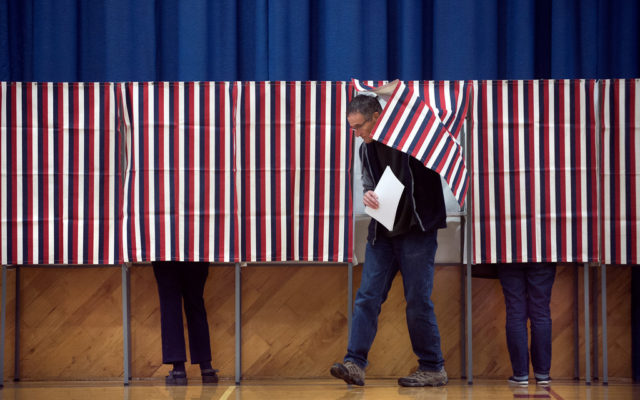
Yes on Question 4 to build and maintain Maine’s valuable trails
Do you favor a $30,000,000 bond issue to invest in the design, development and maintenance for nonmotorized, motorized and multi-use trails statewide, to be matched by at least $3,000,000 in private and public contributions?
By BDN Editorial Board
Question 4, the result of a bipartisan bill in the Legislature, is a $30 million bond for trails in Maine. While voters have approved several bonds for land acquisition for public recreation, hunting and commercial fishing, the state has not previously borrowed money to support the development and maintenance of trails.
Increasingly, outdoor recreation has become an important economic driver in communities across Maine. Snowmobile trails, trails for mountain biking and hiking, and trails accessible to people in wheelchairs have become part of long-range plans as communities plan their futures.
This bond can help jumpstart this work, which will benefit Mainers and visitors, whether they want to spend half an hour on a local trail or spend a weekend exploring a part of the state that may be new to them. It can also help attract new residents, who are drawn by Maine’s outdoor recreation opportunities.
“Maine has the potential to become broadly recognized as the state with the most incredible trails in the Eastern United States,” Angela Arno, the executive director of the Piscataquis County Economic Development Council, said in a recent press release from Partnership for Maine Trails, a group supporting Question 4. “Outstanding trails could easily become part of Maine’s brand identity, drawing people to our state for recreation, to support and start businesses, and to relocate. Investing in trails through passage of the trails bond will provide economic, community, and public health benefits for generations to come.”
Outdoor recreation contributes $3 billion a year to the state’s economy and supports 41,000 jobs. Maine ranks fifth in the nation based on the portion of state gross domestic product that comes from outdoor recreation, according to federal government data. It’s also a growing sector of the economy.
Trails — for snowmobiling, ATV riding, hiking, cross country skiing, biking and other ventures — are an essential part of this equation.
Maine is home to many noteworthy trails, including the Appalachian Trail, Down East Sunrise Trail, Eastern Trail and an extensive Interconnected Trail System for snowmobiles. Communities and other groups from one end of the state to the other would like to maintain and build more trails, and to make existing ones better accessible to people with a full range of abilities.
“Over the past few years, we ve seen a noticeable influx of new residents to our region, and these folks are attracted to our trails and outdoor experiences,” state Sen. Russell Black, R-Wilton, told members of the Appropriations Committee in the spring of 2023. Black co-sponsored the trail bond bill with Rep. Jessica Fay, D-Raymond. “A growing number of people can work from anywhere, and they’re choosing rural Maine. This is great news for local shops, construction workers, and town budgets.”
Snowmobiling alone contributes $600 million to the state’s economy, Black said. One trail project, a bridge over the Sandy River that will connect snowmobile trails with the town of Farmington, is expected to bring nearly $900,000 a year into the local economy.
Question 3 asks voters to approve $30 million in borrowing for trail construction and maintenance, with a priority on accessibility and sustainability. The funds would be managed by the state’s Bureau of Parks and Lands with $7.5 million awarded per year through competitive grant funding to towns, organizations, and clubs. The bond funding will be available for all types of trail projects, including for motorized trail use, non-motorized uses, and multi-use trails. The bond will leverage and be matched with other sources of public and private funding.
This funding is an important investment in Maine’s outdoor recreation economy and heritage.
We recommend a yes vote on Question 4.